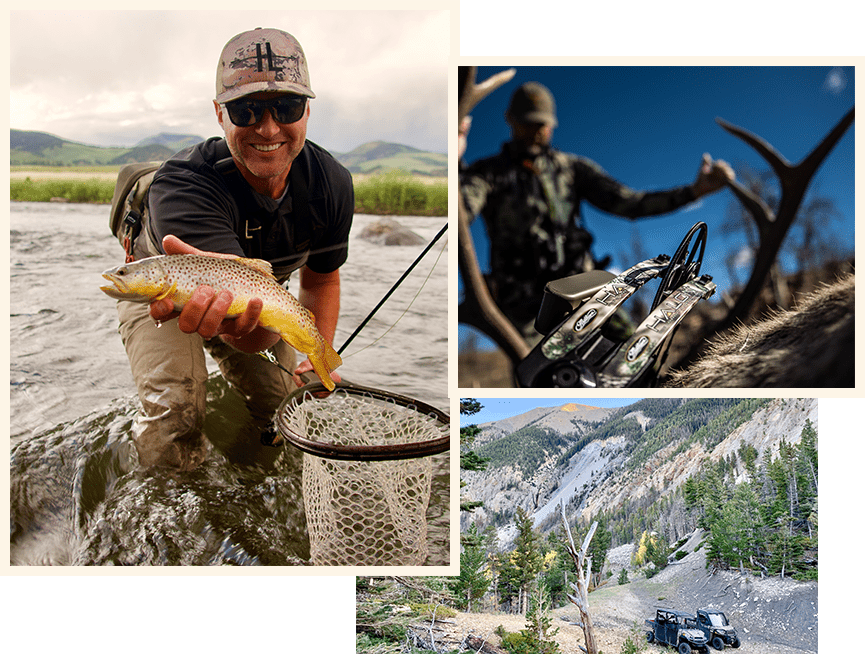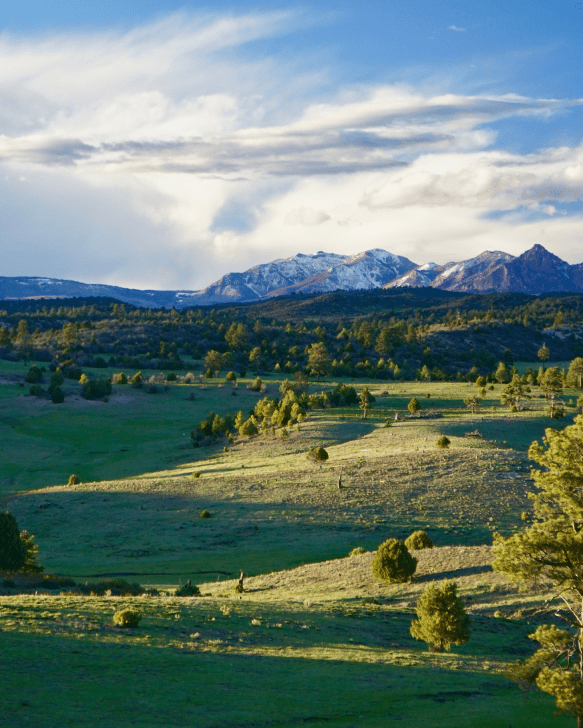You’ve come here to learn exactly how to sell my land for the best price. More complex than selling a home, a ranch’s appeal to investors comes on many levels. First impressions matter. Curb appeal is important, as are the legal documents and the potential of your land as an investment.
Do these 7 things to improve and prepare the ranch’s appeal and close the deal. If you stay organized, you’re bound to achieve positive outcomes.
Short Checklist
1. Hire a reputable ranch broker
2. Gather documentation
3. Shine a light
4. Fix up and add curb appeal
5. Decide what to convey
6. Decide market value of property
7. Ranch marketing
Hire a Ranch Broker
Everything will be easier if you get a reputable ranch broker. This expert will eliminate the worrying about how to sell my land. You’ll be able to take advantage of your real estate agent’s broad experience with selling ranches in the area.
Whether you have owned and operated the ranch or hold investment land, you’ll need to examine every corner to prepare it for sale. Your ranch broker will point out the most important improvements and will know what buyers are looking for in the land as an investment.
Ranch brokers also excel in ranch marketing, which can begin as soon as you accomplish the first 6 steps on the short checklist. And your broker will help with every other aspect of the sale through closing. Relax and enjoy your journey.
Gather Documentation
Ranches can be complicated so organize the legalities. Gather your legal documents, and get a head start on the sale. You’ll need all the property records to avoid being in the middle of a sale only to learn of a problem. Like someone placed a lien on your ranch investment or a long-gone relative is still on the title. Knowing of your exact holdings will help you with insurance, too, and help estimate the market value of property and best listing price.
You’ll need all the legal documentation, agricultural records, and recreational records. Add the financial statements, including annual costs, expenses, and income. Get started on the following documents:
- Title: Run the title for an updated title commitment and to expose exceptions.
- Maps: Order a survey, plats, and other mapping as applicable.
- Access: How do you access the property? Through a deeded and insurable access? Are there public roads, maintained roads?
- Easements: identify all easements given to neighbors, access to public land, documents stating the parts of the year the lands are accessible. Gather copies of easements and baseline inventories pertaining to conservation easements and land trust.
- Water rights: Collect documents for all owned property rights, including deeds, stock certificates, flow records, assessments, and well permits
- Leases: If you have leases, bring the documents that are relevant for grazing permits, leases on existing BLM land, Forest Service land, or the state land. These must delineate the termination dates and the AUMs for each one. In addition, include anything related to the National Environmental Policy Act studies or Environmental Assessments for specific allotments. Also include any third party leases for agriculture or hunting and describe if they will and upon the sale or if they will impact the sale.
- Permits: Oftentimes, ranches receive permits for wildlife management, water pumping, and other things that come under special or agricultural valuation or taxes.
- Mineral rights: A certified landman or attorney can confirm your mineral and royalty rights. The buyer needs to know the amount of the mineral estate and royalties if applicable that come with the property. This will also help you with marketing and negotiations.
- Recreational value: when thinking about the recreational values available on your property, think beyond your own uses. Do you have pertinent wildlife habitat? Are there waterways and fisheries? Do you have hunting units on the ranch? What about equestrian trails or ATV trails? Have you done anything to enhance the naturally occurring recreational value?
- Disclosures: Be sure to delineate any known infrastructure projects or plans afoot by government agencies or neighbors. Your buyer may not be amenable to a wind development project going in on the northern edge of the property.
Shine a Light on What Needs Improvement
Make a list of everything you need to do to improve curb appeal and the pasture appeal of the ranch. Look at the list below, fix what needs fixing, and you’ll be able to talk about what you’ve done to improve the property in your ranch marketing. The more prepared you are for showing, the faster the sale will go. The checklist helps break down exactly what you need to do to improve the ranch’s appeal—at your price.
Fix Up and Add Curb Appeal
You want to impress the buyers and show how the ranch is worth your asking price. When you fix up the ranch home, main buildings, and roads and pastures, consider the appearance and the condition. Appearances matter and the condition will reveal itself in an inspection. So do your due diligence.
- Ranch house improvements: First impressions begin at the main residence where tours usually begin. Drive in and notice the surrounding landscape. Does it look well-maintained? What could you do to improve the setting? In addition to mowing, make sure to haul away the rubble. Depending on the weather, plant colorful flowers or add a nice big rock. Fix up the exterior, clean the building, and fix problems
- Outbuilding cleanup: The secondary outbuildings and structures – barns to deer blinds – require a similar cleanup. In addition to cleaning, get rid of the junk and catch-all corners. If these buildings appear well-maintained, it will go a long way to creating a good impression on your buyers.
- Parcels of improved land: Especially maintain your improved areas and be able to explain how your improvements increase productivity. Look over and tend to the native range land, hay meadows, food plots, and hunting areas.
- Get ready to show off the qualities of your investment land. Adjust grazing practices before marketing to allow maximum quality forage on the range. Likewise, if you have lakes or ponds, fill them with water. And load up the feeders.
- Readiness of fields and pasture: The overall look of the fields and pastures comes under a kind of curb appeal also. If you’re planning to sell your ranch in a future season, you’ll have time to plant some good looking crops to elevate the land as an investment, a favorable farm or ranch.
- Gate and fence repairs: Go over your fencing and mend or replace areas that have been damaged. Look over and operate your gates and replace or paint, as necessary. For showings, leave internal gates open for free flow.
- Roadwork: Western ranches with miles of roads – dirt, gravel, or mowed down grass, could also use your eagle eye. By maintaining the roadways, you will assure clients that this land as an investment is worth your determined price. Grade bumpy gravel roads. Carry away fallen trees and dead brush blocking the roadways.
- Wells and irrigation: Know exactly the condition of your wells and water sources, as well as your irrigation systems. If they have been out of use, get a ranch hand to turn them on and make repairs.
- Special Aspects: Document any current or historical sites related to agricultural or industrial type activity. For example, do you have existing oil and gas drilling or production areas? If so, make sure to clean them up and keep them properly maintained.
- Trash and brush piles: You do not want trash, old brush, and junk present on your property. Depending on the season, burn trash and old brush haul away junk, including hazardous items.
Conveyances
Sit down with your ranch broker to discuss exactly what items you will sell with the ranch. Know what you want to keep and what sells with the property. For example, if you plan to move to a different ranch, you might be keeping your horses and tractors. Or you might plan to take the furniture and artwork. Make an accurate list of everything that does not convey.
Ranch Marketing
Now that you have a handle on what you own, your obligations, and improvement projects, work with your broker to choose the right price. You’ll hear about comparable sales and comparable properties in your area. But your ranch in Colorado or New Mexico may not compare. Your land investment may be unique, as are the ranchers and investors interested in it. Appraisals from at least two qualified professionals could add the reality check that you need.
Decide who to market your ranch for and create marketing materials for that segment. If possible, hire a marketing company or your ranch broker to make the benefits of your property apparent. They can accentuate the wonderful elements of the ranch, improvements, roads, and utilities.
You also want to market the potential of the land. For example, a large ranch in New Mexico sits next to a ski resort and the owners could open an additional lift. Or a Colorado ranch adjoins BLM land and owners could offer trail rides or pack trips. A Wyoming or Montana ranch lies near world-class fly fishing and trails to the Continental Divide. Your ranch investment comes with its own inherent value. Tell investors all about it.
Conclusion
In conclusion, seven things put your ranch into the best position for sale: A broker experienced with ranches, legal documents, fix up and improve curb appeal, decide what stays and the best listing price. Then advertise your beautiful ranch investment for sale. May the right investor notice your efforts.
Ranch Brokers – Rocky Mountain Ranches
Call Harrigan Land Company at 303-908-1101 to sell your ranch in Colorado, New Mexico, Wyoming, Utah, or Montana. Located in Colorado, we’ve spent decades in the Great Outdoors and decades buying and selling ranches along the Front Range.


